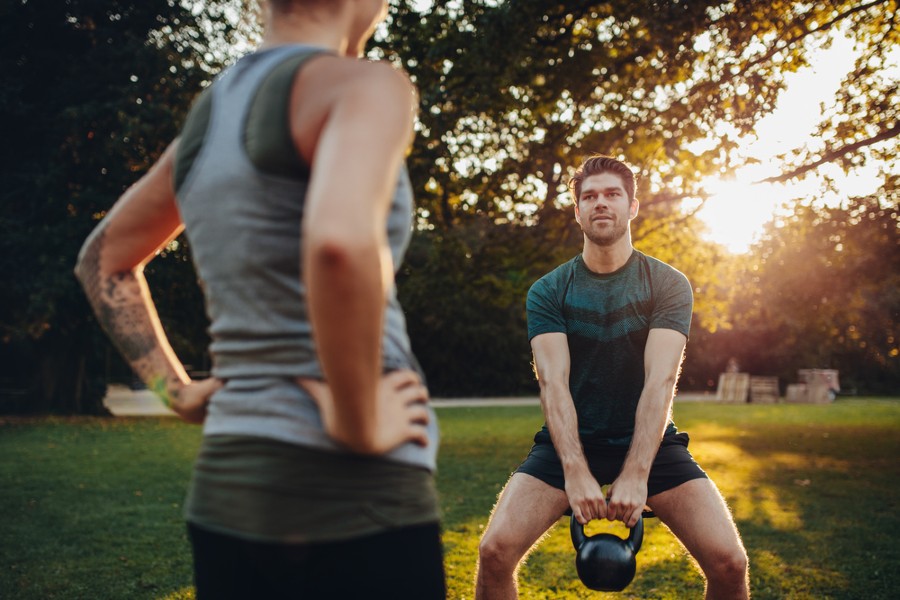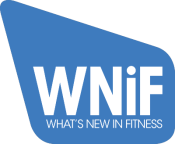Article updated June 2024.
Do you have a passion for health and fitness? Are you good at motivating others? If this sounds like you, becoming a personal trainer could be a good fit for you.
A significant health boom across Australia isn’t showing any signs of slowing down. Aussies are putting more time and effort into fitness than ever, so now is a great time to follow your dream and become a personal trainer.
A personal trainer helps clients to achieve their goals in terms of health and fitness. This is done through exercise and nutrition coaching. Personal trainers can work independently or at a gym. Personal trainers create personalised plans for the individuals they work with and ensure the goals are achievable.
How long does it take to become a PT in Australia?
It usually takes up to a year to become a personal trainer in Australia, but this will depend on the duration of your study.
If you have chosen to do a face-to-face course, completing the qualification may take longer than online. Online courses offer more flexibility in terms of when you can learn so you can potentially finish the course quicker.
However, the best courses will offer a blend of face-to-face and online learning. If you have already completed Certificate III in Fitness, you can get your personal training qualification sooner as you have already completed the first step.

What qualifications do you need to become a personal trainer in Australia?
Before becoming a personal trainer, you must obtain your Certificate III and Certificate IV in Fitness.
The Certificate III in Fitness will teach the knowledge and skills required to work as a gym instructor or in entry-level roles within the fitness industry. This nationally recognised qualification is usually needed before further studies can be undertaken.
To work as a personal trainer or run your own professional fitness business, you must have Certificate IV. However, you can only get Certificate IV once you have completed Certificate III.
Certificate IV in Fitness:
Certificate IV in Fitness covers the skills and knowledge needed to become a personal trainer.
Certificate IV covers:
- How to screen and assess new members or clients so that you are better equipped to understand their needs and any possible dangers.
- A basic level of how the body works in terms of anatomy and physiology.
- How to create and write responsible health, fitness, and workout programs.
- Understanding the capabilities of an individual and creating a plan to help them meet their goals.
- Gain insight into nutrition to offer sound advice to clients (personal trainers are not nutritionists).
- Personal trainers often run their own businesses. The course looks at how you can run a business.
- How to run and create tailored group training and boot camp plans.
- The qualification offers face-to-face practical training in gyms to develop skills.
There are plenty of registered institutes where you can study to obtain your Certificate IV. The Australian Institute of Fitness is one such organisation that has an established name in the Australian fitness world.
In addition to your Certificate IV, you may consider additional qualifications depending on the type of clients you want to work with and your career goals.
You can consider doing nutrition courses, business courses, functional training courses, first aid courses, and so on. You could also study for a bachelor’s degree in exercise science or a related field such as sports science. This will open further career opportunities, and you will better understand exercise and its scientific principles.
As a personal trainer, it could be beneficial to specialise in a specific area and niche down to something like muscle building, weight loss, or training a particular clientele like older adults. Having a specialised field will help stand out within the fitness market and attract a specific type of client.
It is a good idea to join a professional association like AUSactive, Physical Activity Australia, FITREC, and Health and Fitness Association Australia. Joining these types of associations will help keep you updated with industry standards, network with other professionals, and access professional development opportunities.

How much does a personal trainer earn in 2023?
Certificate IV opens up several opportunities for personal trainers. Qualified personal trainers can work in gyms and fitness centres, but they can also be self-employed. Personal Trainers can work independently with professional athletes or in lifestyle centres and resorts; they can also work in hotels and other places where training could be needed.
A personal trainer in Australia can earn between $65 000 to $72 000 per year. The average hourly rate is between $30 to $50. However, as your experience grows, so can your earnings.
If you run your own business, your earning potential could be much more. It is hard work to run your own business, find clients and keep them engaged, but the rewards are worth it, especially as you grow to become a trusted name in the industry.
Are PT's in demand in Australia?
Australia has a growing awareness and interest in health, fitness, and general well-being. This has led to many Australians turning to personal trainers to start living healthier lifestyles and getting into better physical shape.
The personal training industry has become one of the fastest-growing sectors, with personal trainers being highly sought after.
This trend doesn’t appear to be slowing down any time soon. Personal trainers are in demand across Australia, and pursuing a career within this industry is worthwhile.
Becoming a personal trainer requires dedication, but it can offer a fulfilling career for those passionate about health and fitness and helping others achieve their healthy lifestyle and fitness goals. There are plenty of career opportunities for personal trainers, including those starting their own businesses.
As a personal trainer, you will always be learning. It is essential to stay up to date with best practices and industry standards. It will also ensure you provide your clients with the best possible service to enhance your career as a personal trainer.
Some more articles you may enjoy:

Book your Spot at the 2025 Aqua Summit
Aqua Summit is back and early bird tickets are available now. This is an exciting opportunity for everyone in the aquatic exercise space for both networking as well as education and development. The 2025 Aqua Summit is scheduled for 18th – 19th October, across two days of immersive learning. What is the 2025 Aqua Summit? The

Exercise as the Key to Independence for Older Adults
Less than a generation ago, turning 40 was thought of as middle aged, and starting a ‘Fitness Over 40’ exercise program would have been shrugged off as a waste of time for it being too late to get in shape. Now, what we think of as ‘middle aged’ or ‘old’ has changed as people live

Changing Your New Mum Goal Setting Language
Your new-mum client walks into the gym. You congratulate her on her recent arrival, move through her pre-exercise questionnaire and then it’s time for goal setting! An often overlooked aspect of working with clients is helping them to reframe their view of what health and fitness means. Jen Dugard, founder of MumSafe, shares some advice

A Guide for Supporting a PT Client with PCOS
With Polycystic Ovary Syndrome affecting around half a million Australian women, and difficulty in losing weight being a common symptom, it wouldn’t be unusual for a personal trainer to be engaged by a client who is living with this condition. We asked our resident dietitian, Talia Sparks for her advice when it comes to supporting

Common Pre and Post Natal Exercise Myths
Having worked with mums both pre and post natal since 2008, I have discovered that there are many myths around appropriate ways to exercise during pregnancy and recover postnatally. In this article I offer a different perspective on a number of these myths, providing tips for you to move forward with your clients more effectively

Body Beyond Birth: Helping new mums reclaim their body and health
Not many business partners strategize while trying on clothes, or hold meetings from their home Pilates reformer machines. But Becky Dyer and Jackie Steele, the Co-Founders of Body Beyond Birth, are women on a mission. Both working mums who juggle school drop-offs, client meetings, family meals, and five children between them, the pair are familiar
